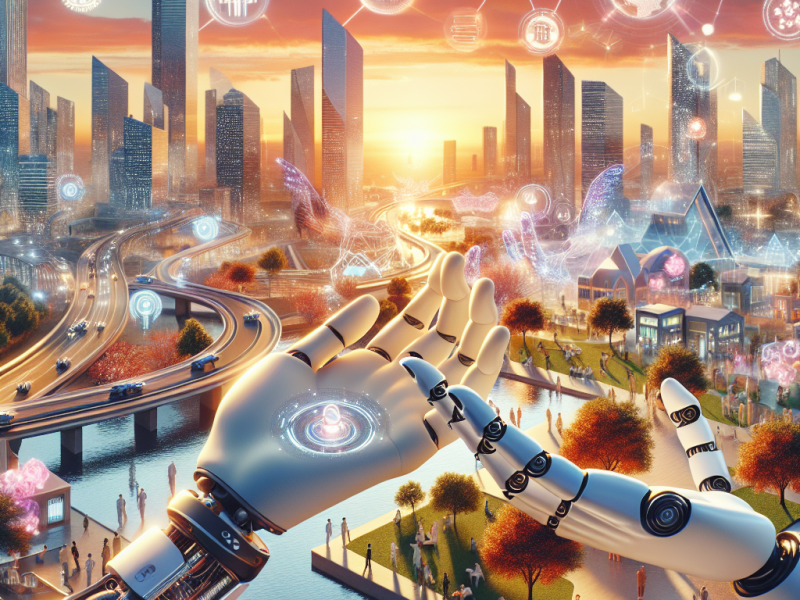In today’s rapidly evolving technological landscape, automation is no longer a futuristic concept—it is a cornerstone of modern business operations. From assembly lines to AI-driven chatbots, automation has transformed industries, delivering unprecedented efficiency and scalability. However, as we harness the power of automation, one vital question arises: Just because we can automate something, does it mean we should? The answer lies in striking a careful balance between automation and human involvement to foster a future where people and technology work harmoniously together.
The Promise of Automation
Automation brings immense potential to revolutionize businesses. By automating repetitive tasks, organizations can reduce costs, increase productivity, and scale operations efficiently. For example:
- Manufacturing: Robotics have streamlined production lines, boosting output while reducing errors.
- Logistics: Automated systems like drones and predictive analytics optimize supply chains, ensuring faster deliveries.
- Healthcare: AI-powered tools assist in diagnosing diseases, enabling quicker and more accurate treatment plans.
Emerging technologies such as artificial intelligence (AI), robotic process automation (RPA), and machine learning (ML) continue to unlock new frontiers in automation, empowering organizations to achieve more than ever before. However, these innovations are most impactful when implemented with strategic intent.
The Pitfalls of Over-Automation
While the promise of automation is undeniable, over-automation can lead to significant pitfalls. Businesses must tread carefully to avoid unintended consequences, such as:
- Loss of Human Touch: Automated customer service solutions, such as chatbots, often fall short in addressing nuanced or emotionally charged situations, leaving customers frustrated.
- Job Displacement: Excessive automation can lead to workforce reductions, creating societal challenges and widening economic inequalities.
- Over-Reliance on Technology: Systems entirely reliant on automation are vulnerable to failures—whether due to technical glitches or cybersecurity threats.
The goal should not be to replace human capabilities but to complement them, ensuring automation enhances the customer and employee experience rather than diminishing it.
The Ethical Responsibility
As businesses embrace automation, they bear a significant ethical responsibility to balance its adoption thoughtfully. Key considerations include:
- Preserving Human Creativity and Empathy: Machines excel at repetitive tasks but lack the emotional intelligence and creative problem-solving skills unique to humans.
- Ensuring Inclusivity and Fairness: Automation must not reinforce biases or exclude certain groups from benefiting equally.
- Safeguarding Data Privacy: Automated systems often rely on vast amounts of data, raising concerns about how that data is collected, stored, and used.
Ethical automation prioritizes humanity, ensuring that technology serves as an enabler rather than a replacement for human potential.
Finding the Right Balance
Balancing automation requires businesses to adopt a strategic and thoughtful approach. Here’s a framework to help determine what can and should be automated:
- Assess Business Objectives and Customer Needs: Identify tasks where automation adds value without compromising quality or user experience.
- Evaluate Task Complexity and Context: Automate repetitive, rule-based tasks while reserving complex, high-value tasks for human intervention.
- Adopt a Hybrid Approach: Combine the strengths of humans and machines by implementing collaborative AI systems and co-bots (collaborative robots).
Automation should alleviate mundane work, empowering employees to focus on innovation, creativity, and relationship-building.
A Vision for the Future
Looking ahead, the future of work lies in the seamless collaboration between people and technology. Balanced automation can:
- Boost productivity without eroding the human touch.
- Create opportunities for upskilling and new job roles, enabling employees to adapt and thrive.
- Foster sustainable, people-centric digital transformation that prioritizes long-term societal benefits.
By thoughtfully leveraging automation, businesses can pave the way for a future where technology amplifies human potential rather than replaces it.
As automation continues to reshape industries, businesses must remember that the question is not just about what can be automated, but what should be. By approaching automation with a people-first mindset and ethical responsibility, organizations can ensure that technology serves as a partner, not a replacement. Together, we can build a better future where people and technology work hand in hand to achieve extraordinary outcomes.
We believe in the transformative power of automation, but we also recognize the importance of striking the right balance. Our approach ensures that automation enhances human creativity and decision-making rather than replacing it. By combining cutting-edge technology with a people-first mindset, we aim to foster a future where businesses thrive, employees feel empowered, and customers receive exceptional value. Automation is not just about efficiency; it’s about purpose.
Let’s embrace automation responsibly—because the future belongs to those who can balance innovation with humanity. Reach out now!

